If you’re a beginner gardener with a vegetable garden, you’ve likely encountered a variety of pests that can wreak havoc on your precious plants. I sure have! One such common garden pest are the slug and snail. These slow-moving creatures may seem sticky but harmless, but they can cause significant damage to your plants if left unchecked.
In this blog post, I’ll inform you about the impact of snails on your vegetable garden, how to identify their presence, and effective methods to control and prevent their damage.

When it is a moist evening in our garden you must be careful, our garden snails will be on the loose at that time and out of their hiding places, if you don’t watch your step you’ll crush them. I think it is so nasty to step on them!
What are snails and slugs and how do they impact plants?
Snails and slugs are soft-bodied, so called, gastropod mollusks. Snails have a spiral-shaped shell, slugs don’t. They thrive in moist environments and are most active during the night or on cloudy and rainy days. Snails and slugs are herbivorous creatures, meaning their food source is plant material, and some species, unfortunately, have a particular affinity for tender vegetable greens.
What are the most common snails in the vegetable garden?
Several species of snails and slugs can be found in vegetable gardens. This is, of course as all things do, depending on your geographic location and climate. Two of the most common land snails and slugs that you might encounter in a vegetable garden are:
The Common Garden Snail (Helix aspersa)
Also known as the brown garden snail, this species is one of the most widespread garden pests. It has a rounded, spiral shell and feeds on a wide range of plants, including vegetables and ornamental plants.

European Red Slug (Arion rufus)
This large slug has a distinctive reddish-brown color and can be a significant pest in gardens. It’s known to feed on various crops, including vegetables, fruits, and ornamental plants.

If you know which specific snail and/or slug species are in your area you can determine the best methods for control. Integrated pest management strategies, such as ‘just’ simply keeping the garden area clean and reducing hiding spots, snail bait and snail traps, physical barriers, natural predators, and targeted organic controls, can help manage snails effectively while minimizing harm to your garden.
The primary way snails impact plants is through feeding. They use their radula, a rasping tongue-like organ, to graze on plant tissues. This feeding behavior can lead to a variety of issues for your vegetable garden, such as holes in leaves, stunted growth of your plants, and loss of crops.
Identifying snail damage to your precious plants
It’s essential to be able to identify snail damage, the earlier you spot snail damage, the faster you can take prompt action. Here are some common signs of snail presence in your vegetable garden.



Effective methods to control snails
Now that you’ve identified snail presence and damage in your vegetable garden, it’s time to take action to protect your plants. Here are some effective methods to control snails:
Handpicking
One of the simplest and most environmentally friendly ways to control snails is by handpicking them from your garden. Go out in the early morning or evening with a flashlight and pick off the snails you see. Dispose of them in a bucket of soapy water or a sealed plastic bag to prevent them from returning.
Beer traps
Snails are attracted to the scent of beer. Sink shallow containers, such as saucers, into the ground and fill them with beer. The snails will be lured to the beer trap, fall in, and drown.
Natural predators
Encourage natural predators of snails, such as birds, frogs, toads, and some beneficial insects, to inhabit your garden. Creating a wildlife-friendly environment can help maintain a balanced ecosystem where these predators keep snail populations in check.
Copper barriers
Snails dislike crossing copper surfaces due to a reaction with their slime. Place copper tape or wire around vulnerable plants or raised beds to create a barrier that deters snails from reaching your crops.
Diatomaceous earth
Sprinkle food-grade diatomaceous earth around the base of your plants. This natural substance contains sharp particles that can pierce the soft bodies of snails, causing them to dehydrate and die.
Organic snail baits
If other methods prove insufficient, consider using organic snail baits that contain iron phosphate as the active ingredient. These baits are safe for pets, wildlife, and beneficial insects and can effectively control snail populations when used as directed.
Organic snail control
Use coffee grounds as a natural remedy to deter snails and slugs from damaging your plants in the garden.
What do coffee grounds have to do with snails?
If you love coffee, and don’t love snails, you can use the coffee grounds to repel snails! The caffeine and other compounds present in coffee grounds can have adverse effects on these pests, making them less likely to feed on plants. Here’s how coffee grounds can be beneficial in managing snails in the garden:
- Coffee grounds contain compounds like caffeine, which is toxic to snails and slugs. When these pests come into contact with coffee grounds, they may be deterred from crossing the area or feeding on nearby plants.
- Coffee grounds have a slightly gritty texture, which can be uncomfortable for snails and slugs to crawl over. This texture can make it difficult for them to move freely, potentially discouraging them from entering an area with coffee grounds.
- Snails and slugs prefer moist environments. Coffee grounds have the ability to absorb moisture from their surroundings, creating a drier environment that these pests might avoid.
- By spreading a layer of coffee grounds around plants or garden beds, you can create a barrier that snails and slugs may hesitate to cross. This can help protect your plants from being damaged.
- As coffee grounds break down, they release some nutrients into the soil. While this is not a direct method of snail control, healthier plants might be better equipped to withstand pest damage.
It’s important to note that while coffee grounds can be helpful, they might not provide foolproof protection against snails and slugs. These pests can still find their way around barriers or adapt to the presence of coffee grounds.
Additionally, the effectiveness of coffee grounds as a snail deterrent can vary depending on factors such as the type of snail or slug species in your area, the weather, and the overall garden conditions.
Tips for when you are using coffee grounds as a snail repellent
- Evenly spread a layer of used coffee grounds around the base of the plants you want to protect.
- Use organic coffee so you’ll be sure you don’t add any unwanted pesticides, fungicides or herbicides in your garden.
- Coffee grounds break down over time and lose their potency. Refresh the layer periodically to maintain its effectiveness.
- Coffee grounds can be one part of an integrated pest management approach. Combine them with other methods like handpicking, creating physical barriers, and using other natural or commercial repellents.
Remember that while coffee grounds can be a useful tool in your gardening arsenal, they are not a guaranteed solution. Monitoring your garden regularly and employing a variety of strategies will likely yield the best results in managing snails and slugs effectively.
Preventive measures to keep snails at bay
While controlling snails is essential, preventing their infestation in the first place can save you time and effort. Here are some preventive measures to keep snails at bay!
- Snails thrive in damp environments, so try to reduce excess moisture in your garden. Avoid overwatering and ensure proper drainage in your beds.
- If you have plants in flower pots in your garden, elevate them on stands or use pot feet to keep snails from climbing into the containers.
- Snails love hiding in dark, damp areas, such as garden debris and fallen leaves. Keep your garden tidy by removing clutter and debris.
- Snails dislike crawling over rough and abrasive surfaces. Mulch your garden with materials like woodchips, crushed eggshells, coarse sand, or pine needles to create a barrier that discourages snails.
- Some plants, like garlic, chives, and mint, have natural repellent properties that can deter snails. Consider incorporating these plants into your vegetable garden to create a protective buffer around your precious plants.
So, are snails in your garden good or bad?
Pro’s about snails and slugs in your vegetable garden
Some snail species feed primarily on decaying organic matter and can help break down dead plant material, contributing to nutrient cycling in the garden ecosystem. That is a good thing, if the slugs are on your compost heap they will help break down your compost faster!
Furthermore, snails can serve as indicators of the overall health of your garden. An abundance of snails might suggest a healthy level of organic matter and moisture in the soil. Which is a good base for your vegetable plants.
Con’s about snails and slugs in your vegetable garden
However, many snail species are herbivorous and can feed on a wide variety of plants, including vegetable crops. They can cause significant damage by eating leaves, stems, and even fruits, leading to reduced yields and unhealthy plants.
If you have a snail problem, or an ever-increasing slug population you could consider some of the above-mentioned preventive or protection measures to get rid of your snail problem. An indication of too many snails is lots of plant damage and, of course, when you see a lot of snails you probably have too much of them in your home garden.
Another downside of snails in your garden is that some snails can carry and spread plant diseases or pathogens from one part of the garden to another. This, of course, can negatively impact the health of your plants. Furthermore, snails might consume the delicious vegetables that you intended to harvest for your own consumption and the slimy trail they leave behind is not really an appealing sight!
In general, if snail populations are kept in check and are not causing significant damage to your vegetable garden, they might not be a major concern. However, if you notice that snails are causing substantial harm to your crops or if you’re growing high-value vegetables, it’s a good idea to implement measures to manage their population.
I recommend you integrate some pest management, which involves a combination of strategies like handpicking, removing hiding spots, using physical barriers with mulch or coffee grounds, and introducing natural predators. This way, you can strike a balance between maintaining a healthy garden ecosystem and protecting your valuable crops from excessive snail damage.
To conclude
While snails can pose a threat to your vegetable garden, they also can be an indication of a healthy level of organic matter. If you have a snail problem you can effectively control and prevent their damage.
Regularly inspect your plants, use natural control methods, and implement preventive measures to keep your vegetable garden thriving and snail-free. As you gain experience and learn more about your garden’s unique ecosystem, you’ll become better equipped to handle any challenges that arise and enjoy the rewards of a bountiful harvest.
Happy gardening!



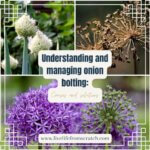

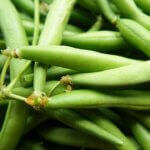
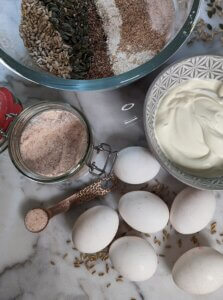


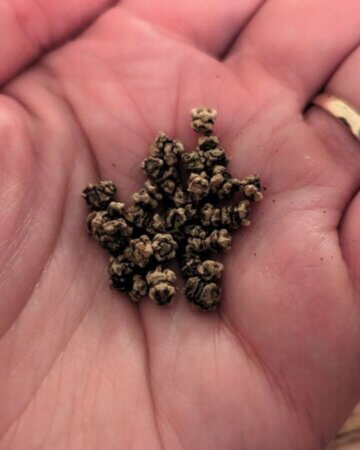
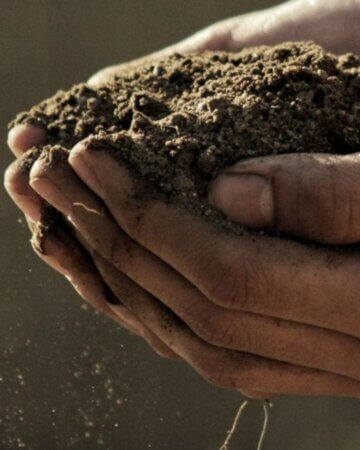
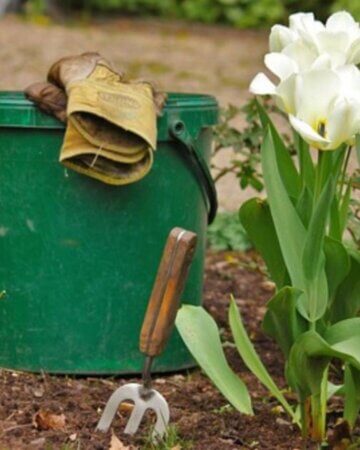
Thank you for breaking this down for me and for using photos. This post is super helpful!
Glad it was helpful. Luckily we have a load of snails around our house so we had anple opportunity to photograoh them!